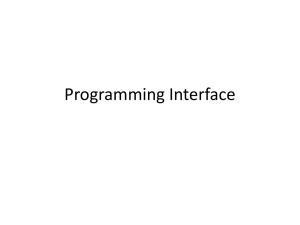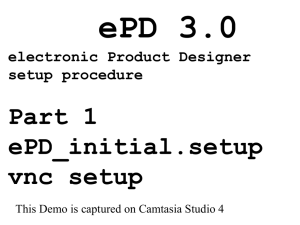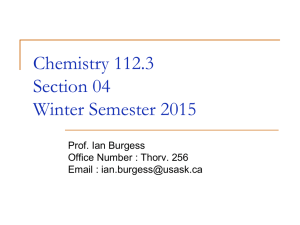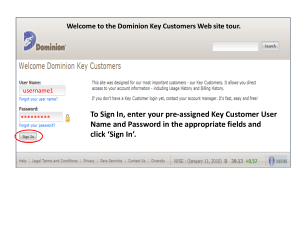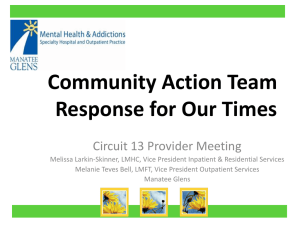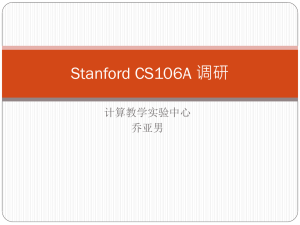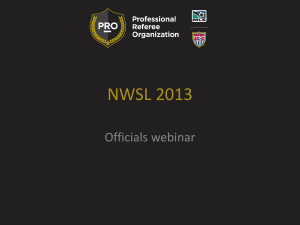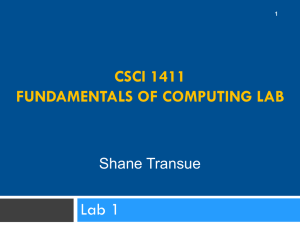74.101 Slides - Computer Science
advertisement
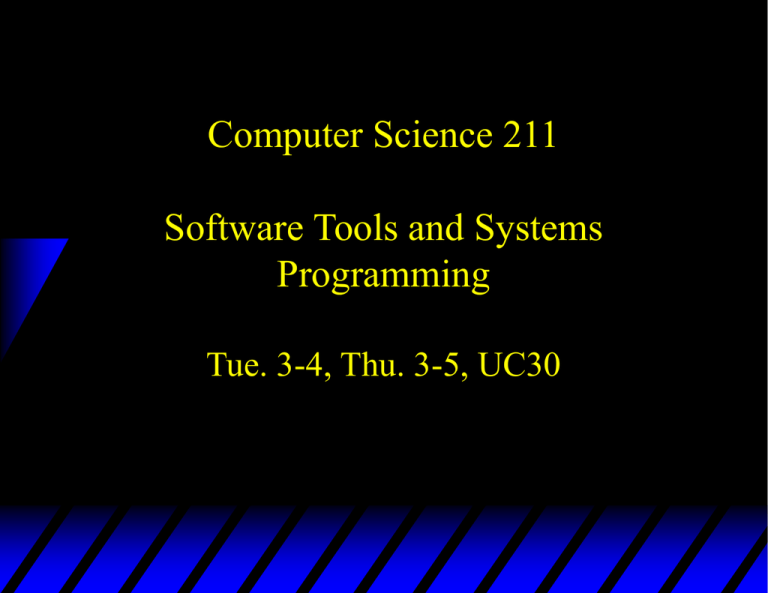
Computer Science 211 Software Tools and Systems Programming Tue. 3-4, Thu. 3-5, UC30 Software Tools & Systems Programming Welcome! I am Dr. Bin MA, your instructor. I am an Assistant Professor of Computer Science at UWO. You may reach me by bma@csd.uwo.ca Middlesex College 364 x. 86890 Software Tools & Systems Programming To talk to me in person: Pls. try to come only at my office hours: Tuesday 11-12, Wednsday 4-5 Other time is fine but not encouraged. TA’s office hours TBA. We will decide other office hours for me and the Teaching Assistants as the need arises. Software Tools & Systems Programming http://www.csd.uwo.ca/courses/CS211b contains: Assignments Lecture notes will be posted at the END of the week in which they are presented Marks Important notices … Texts and References Mark G. Sobell, UNIX System V: A Practical Guide. – about how to use Unix – recommended – but do have a reference book about Unix! King, C Programming: A Modern Approach. – about C Programming, a little about C++. – required. – readings from the book will be assigned. Software Tools & Systems Programming -- Goal Use Unix and Program in C fluently Software Tools & Systems Programming Topics (1) Unix fundamentals – history – files think of Windows files – processes programs that are currently running Unix allows concurrent processes – shells a command line interpreter, think of the Dos prompt window – basic commands Topics (2) – emacs an editor, suitable for editing C programs. – utilities applications that are popular in the Unix community – shell programming shell is not only a command line interpreter – regular expressions make up a useful notation system to specify text patterns in Unix community useful for some utilities and perl – pipes and filters important mechanisms in Unix combine simple commands to perform complex tasks Software Tools & Systems Programming Topics (3) C programming – Syntax: Variables, statements, functions. – I/O: standard I/O, files. – Standard library: standard functions that you can include in your program. – System calls: Communicate with the operating system. Software Tools & Systems Programming Topics (4) Software tools – Make: helps to organize and build a program in multiple files. – SCCS, RCS: Source Code Control System, Revision Control System. – Lint, Gdb: tools that help you to debug a program. Software Tools & Systems Programming Topics (5) C++ programming – Classes and Objects: think of classes and objects in java – Templates: “uncertain” classes, you can declare classes from a template class by filling appropriate information at the “uncertain” fields. – STL: Standard Template Library. Software Tools & Systems Programming Topics – conclusion Unix fundamentals C programming Software tools C++ Student Evaluation four (4) assignments each worth 6% of your final grade – assignments are to be done individually. one midterm exam held near the end of February. – worth 20% of your final grade. final exam worth 56% of your final grade. Assignments (1) Assignments involve – shell programming – C and C++ programming – concept questions (non-programming) Programming assignments must be able to run on the departmental computing equipment – You may develop assignments on your home computer. – It takes time to get it work at a different environment. Assignments (2) All assignments will be available on the course website. – the marks and answers for previous assignments will be there as well – please monitor these pages closely Assignments are to be done individually. – – – – It’s a good thing to discuss. Never copy an assignment. Never let others “have a look” at your assignments. Be friendly not to ask to have a look at others’ assignments. Assignments (3) Assignment Submission Policy – Assignments due by 5pm of the deadlines Hand in at appropriate assignment locker – Late assignments accepted for up to five days after the deadlines – weekends count as a single day late penalty of 5% of the available marks per day NOT based on the time it was printed – Each student has three late coupons virtual coupons held by TA each coupon can cover the penalty for one day late cannot be used to extend the fifth day deadline – You must follow assignment guidelines to ensure full marks – Check the course website for more accurate information Ethical use of Computing Facilities Students are expected to adhere to the Rules of Ethical Conduct to use the computing facilities of the Department: http://www.csd.uwo.ca/policy/index.html You should receive an email about the rules. Unix Basic Unix accounts You must have an “account” to use a Unix computer. An account has a username and a password. You can only access the resources that are specified by your account information. There is at least one super user account in a system usually named by “administrator”, who has absolute power over the system. Login your account (1) User name (1) (2) Password is not displayed. Greetings from Unix. prompt (3) cursor Login your account (2) After login Change password immediately if you login for the first time command Ready for new command To make a good password A bad password – Birth date. – Telephone number. – Name. tricks to make a good password – picked letters from a sentence. I love Unix Ioenx – a mix of upper and lower cases. – use some non-alphabet characters. – change your password regularly. a bad password not only harms you – attack is much easier with an account on the computer – ITS and CSD also run password "crackers“ to guess your password by "intelligent brute force" Log out Don’t forget to logout! algernon% exit algernon% logout Some basic commands who: Who are using the system. algernon% who bma ttyp0 scott tty02 jenny tty03 Aug 11 08:47 Aug 10 11:01 Aug 10 07:21 who am i: Who am I. algernon% who am i bma ttyp0 Aug 11 08:47 Some basic commands ls: List the files under current directory algernon% ls readme cs211.1.ppt cs211.2.ppt cs211.3.ppt cs211.ppt.gz make/ cat: Display the content of a file algernon% cat readme Unix is easy! algernon% notes.zip unix-faq shell/ unix-faq~ Some basic commands Ctrl-c: (press <control> and c at the same time) Interrupt the current task. algernon% cat ^c algernon% netscape: surf the net. algernon% netscape Some basic commands man: See the manual page of a command. algernon% man cat Reformatting page. Wait... Done User Commands cat(1) NAME cat - concatenate and display files SYNOPSIS cat [ -nbsuvet ] [ file ... ] DESCRIPTION cat reads each file in sequence and writes it on the standard output. Thus: example% cat file prints file on your terminal, and: example% cat file1 file2 >file3 concatenates file1 and file2, and writes the results in file3. If no input file is given, cat reads from the standard input file. OPTIONS--More--(11%) Try the following commands with man cd: change directory to .. more: show the content of a file in pages. cp: copy a file from .. to .. rm: remove a file. mkdir: make a directory. mv: move a file to.. mail: send an email.
